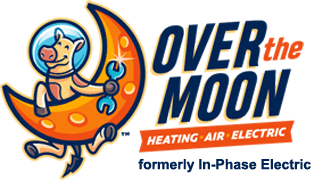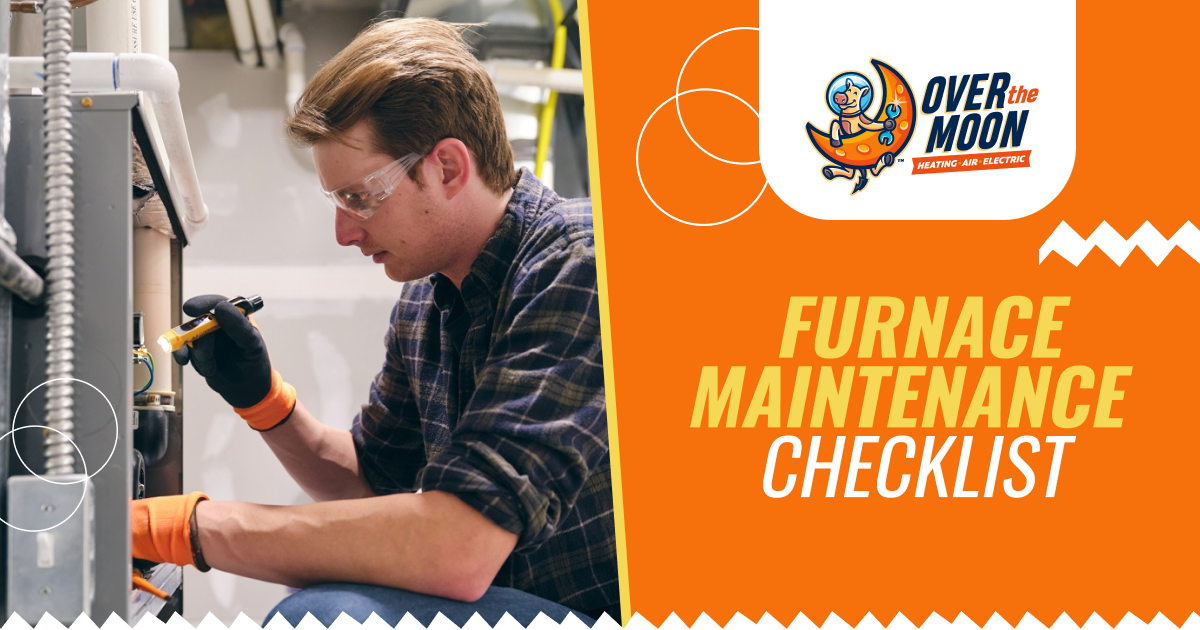Furnace maintenance covers a range of tasks to ensure your heating system runs smoothly, safely, and efficiently. There are steps to take yourself throughout the year, and those a professional will take during an annual furnace tune-up. Otherwise, a lack of comfort and an increased risk of a fire or carbon monoxide leak can endanger your household. But you’ll avoid many issues by following this furnace maintenance checklist.
DIY Checklist for Furnace Maintenance
Here is a list of items you don’t need a professional for:
- Check/Change the Furnace Filter: Despite its simplicity, the filter is among the most important parts of your furnace. If it gets clogged or dirty, poor airflow can reduce heating performance and energy efficiency. Change it at least every three months (one month during times of high usage) or per the manufacturer’s recommendations.
- Inspect the Burner Flames: Igniting gas keeps the burner flame going, providing the system’s main heating source. The burner flame color can tell a lot about your furnace’s health. Checking the flame first requires turning off the furnace and opening the access panel. Then turn the unit on and see if the flame is blue and even. If it’s flickering and/or yellow, call a professional.
- Keep Your Furnace Clean: This also goes for the area around it. Clear any clutter or debris from the furnace room. If there’s dirt, dust, or grime on the outside of the unit, clean it with a vacuum, brush, or cloth dipped in a mild detergent. Just avoid using flammable cleaners, as their residue can catch fire if heated.
- Check the Vents: To reach rooms, the heat produced by your furnace must pass through air ducts and vents. Dirty or obstructed vents can prevent air from being properly distributed. Fortunately, vent grills and the ductwork immediately behind them can be easily cleaned. Also, clean return vents; if blocked, airflow leading back to the heater can be limited, straining your furnace.
- Test the Thermostat: Before you start using your furnace for the season, switch the thermostat to heat mode to see if it turns on (check the heat settings and fan modes too). You can also turn the heat down a few degrees. This reduces the furnace’s workload. Or, install a programmable or Wi-Fi thermostat to maximize control and efficiency.
- Seal Air Leaks: Air can leak through spaces in walls and around windows and doors. Check for drafts and cool air. Your furnace will be strained if heat is escaping. Caulking spaces and installing weatherstripping around doors and windows can help your heater work less hard.
- Clear Debris From the Outdoor Unit: The condenser unit works alongside the furnace to keep your home warm. A dirty condenser will cause the system to work less effectively. Therefore, remember to clear debris, dirt, objects, and vegetation from the outdoor unit and a few feet around it.
Professional Furnace Maintenance Checklist
If you’re comfortable, you may be able to clean inside your furnace. However, it’s best to let a professional work with more sensitive parts. Here are some important service tasks that should be on the checklist:
- Clean the Inside of the Furnace: Working with the components inside the unit requires some experience. We recommend letting a technician:
- Clean dust and debris from the burners
- Clear soot from the flame sensor
- Dust off the pilot and hot surface ignitor
- Clean dust and carbon deposits from the combustion chamber
- Inspect the fan for damage and remove any debris
- Inspect the Furnace Heat Exchanger: Consisting of looped metal tubes, the heat exchanger heats the air in the unit. It runs from the burner assembly to the flue vent. Inspecting the component requires turning the system off and removing the access panel. A technician looks for visible cracks. They can also determine if the heat exchanger is leaking and needs repair or replacement.
- Check the Drive Belt: The drive belt keeps mechanical components moving so your furnace can operate. A worn, cracked, or frayed blower belt can break, causing serious damage. However, replacing it costs just a few dollars.
- Lubricate Motor and Blower Shaft Bearings: Bearings should be lubricated annually with lightweight motor oil. This helps prevent wear and tear. While you can do this yourself, it’s usually part of a technician’s checklist.
- Inspect the Vent System: The flue pipe, exhaust vent, and chimney help remove toxic gases from your home. During furnace maintenance, our team checks for holes in the flue pipe, gaps at connection points, and blockages at the top of the vent or chimney.
- Seal Vent/Duct Leaks: A maintenance technician can use various methods to seal leaks. Small leaks can be sealed with special tape, while larger ones may require replacing vents or air ducts. Advanced duct sealing methods allow contractors to close vents and blow a sealant in to close off any holes, cracks, or gaps from the inside.
Call Over the Moon for Furnace Maintenance
Our licensed HVAC technicians provide comprehensive annual furnace tune-ups for customers in and around Waukesha County, WI. Cleaning, testing, and inspecting your furnace, as well as making adjustments and small repairs, can improve safety, efficiency, and longevity. Maintenance also keeps the warranty valid. To schedule annual furnace maintenance or learn more about our maintenance plan, continue browsing or call (262) 510-0956.

